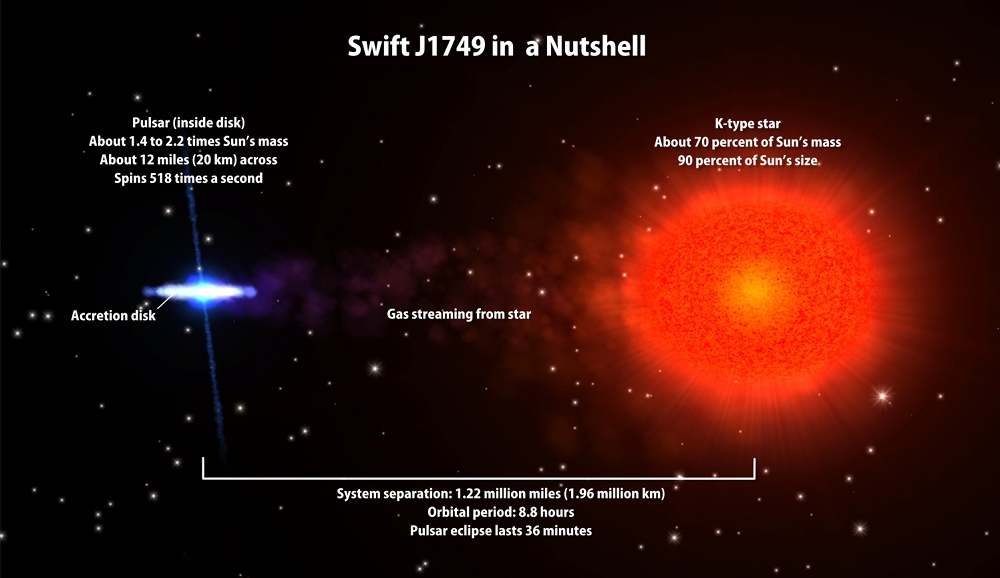
 Credit: NASA/GSFC
Credit: NASA/GSFC
Weighing a Neutron Star
How much matter can you squeeze into a small space? On earth the densest natural element is iridium (or perhaps osmium), with a density of about 22.5 grams per cubic centimeter. Beyond earth things get weirder. Black holes floating around our Galaxy have regions called singularities where the density is (perhaps) infinite, but such singularities are screened by the event horizon (with perhaps some notable exceptions) so they're impossible to study from the safety of our Universe. Some of the densest things we know about that we can study are neutron stars, the dead cinders left behind by the explosive death of a massive star. Nature kindly provides these objects, where effectively the entire mass of the sun is squeezed down to a tiny object that would fit inside the Washington DC beltway. A neutron star is about 10 trillion times denser than iridium. It's similar, in fact, to the density of the atomic nucleus. No one really understands how the extreme densities of neutron stars make matter behave, or whether such enormous pressures at the center of a neutron star produces types of matter seen nowhere else in the Universe. So neutron stars are objects of intense interest for astrophysicists. Recently astronomers have uncovered a key neutron star system which provides perhaps the best measure of the mass of a neutron star. This object, called Swift J1749.4-2807, was discovered by the Swift space observatory in June of 2006. In April of this year it exploded in X-rays, and during this outburst the X-ray emission was observed by the RXTE space observatory. RXTE made a detailed study of the variation of the X-ray emission with time and found an important result: the the neutron star is actually eclipsed by the companion star. By studying these eclipses, astronomers can obtain an extremely precise neutron star mass measurement, once the companion star is identified and studied. The image above is an artist's impression of Swift J1749.4-2807.
Published: October 18, 2010
<
HEA Dictionary ● Archive
● Search HEAPOW
● Other Languages
● HEAPOW on Facebook
● Download all Images
● Education ● HEAD
>

Each week the HEASARC
brings you new, exciting and beautiful images from X-ray and Gamma ray
astronomy. Check back each week and be sure to check out the HEAPOW archive!
Page Author: Dr. Michael F. Corcoran
Last modified Monday, 26-Feb-2024 17:20:10 EST


